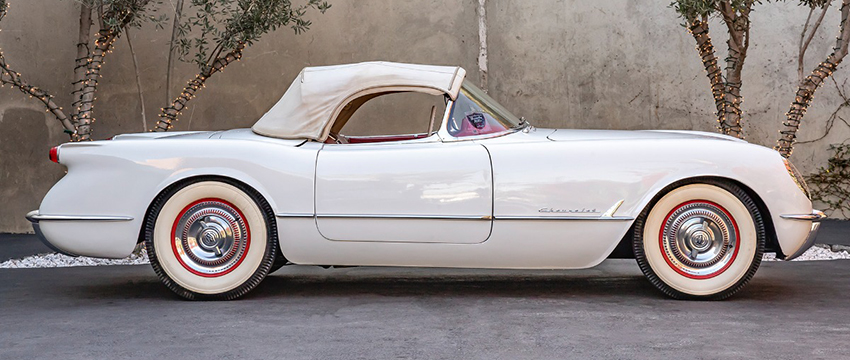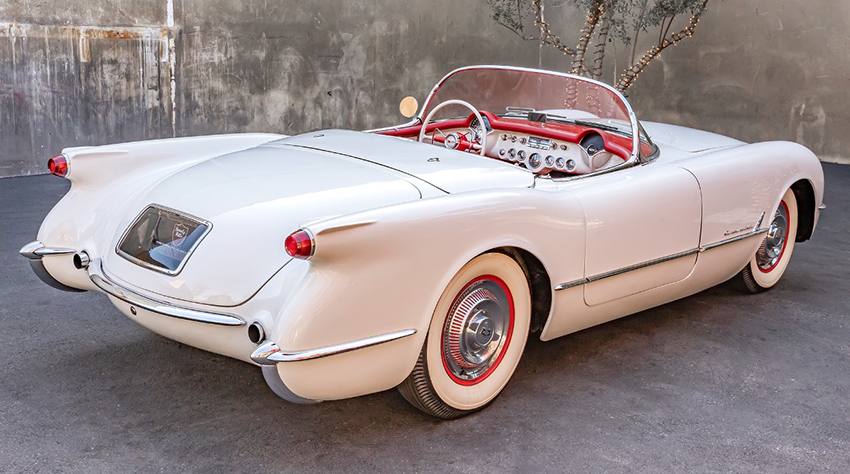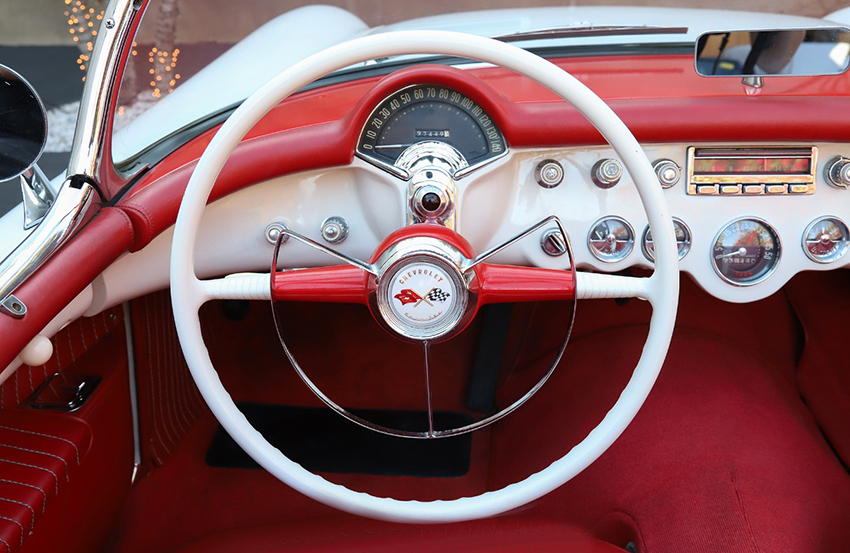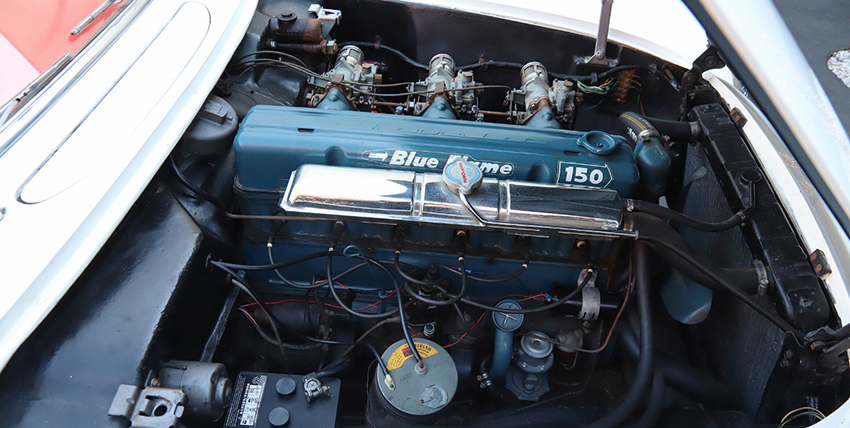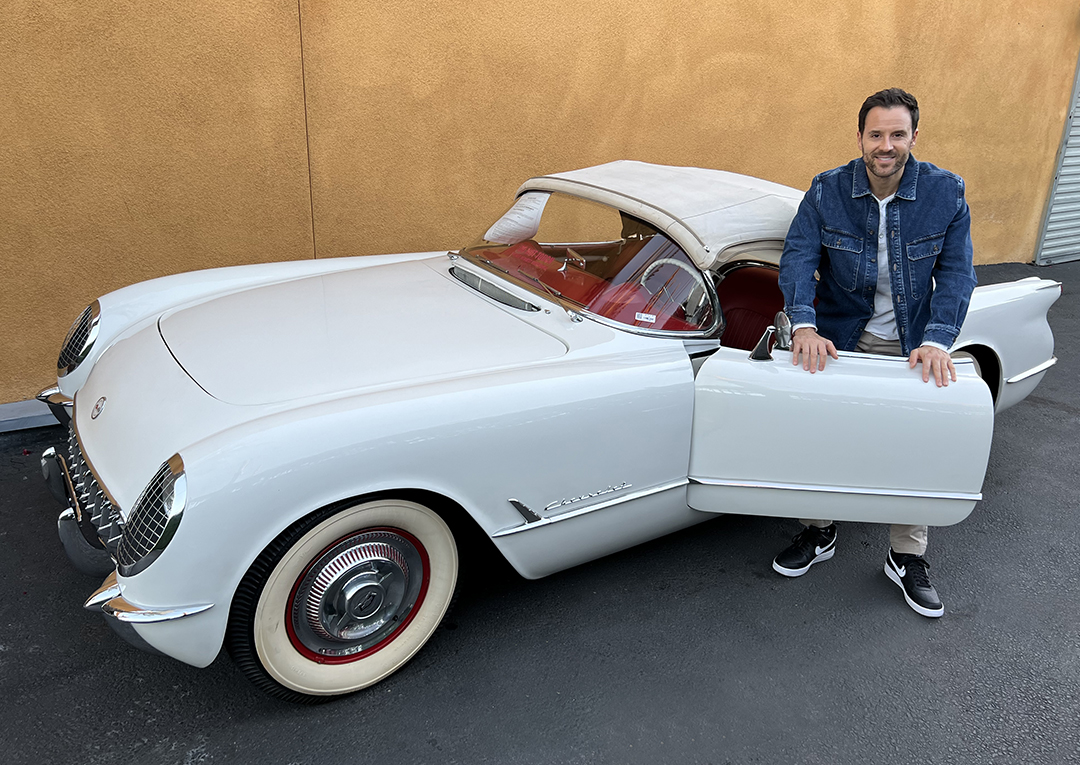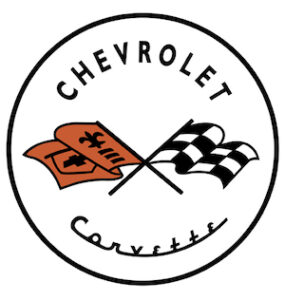Car Tales: Most Successful And Most Popular, Chevrolet Corvette
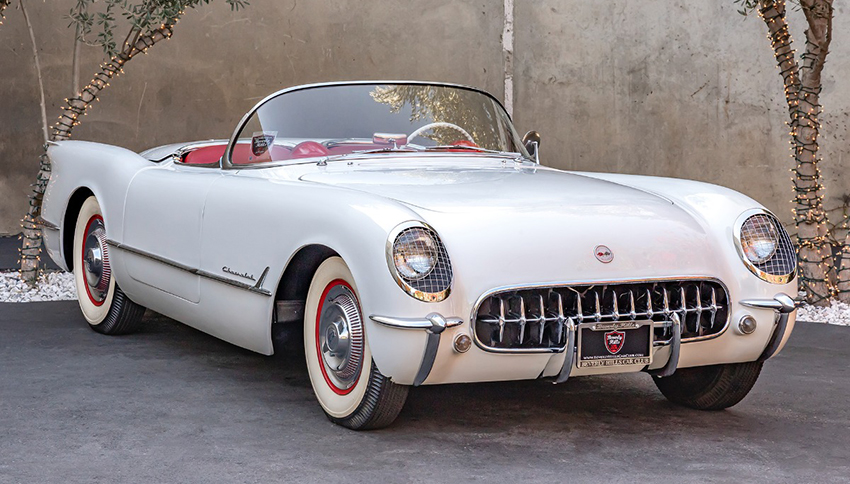
‘All you have to do is look at it in profile: the Corvette, colloquially known as the ‘Vette, is clearly a motor car permanently prepared and poised for take-off at terrifically high speed. No wonder one early Corvette buyer was the legendary actor John Wayne.
‘Yet this extraordinary car was not an immediate success. What is really surprising is that initially these now archetypal, stunningly beautiful automobiles, first introduced in 1953 and named after a small, highly maneuverable warship, sold slowly. It took a while before the Chevrolet Corvette took off commercially. Although the first 300 built in 1953 were only available in Polo White, this was augmented by 1954 by Pennant Blue, Sportsman Red and Black. (All exterior color choices – except for the Pennant Blue, which came with tan – came with red interiors, the color of feisty Mars) Even with this greater visual variety the 3,640 that were built in 1954 did not take off at the speed of the Corvette itself: nearly a third were not sold by the end of the year.
‘Dropping the price would certainly have helped the upward trajectory of the sales. At first priced at $3,498.00, this was too costly for the youthful market at which the Corvette was aimed. For the 1954 models Chevrolet considerably dropped the price to $2,774.
‘Right now at Beverly Hills Car Club we have a classic, very early example of this very timeless car, a 1954 Chevrolet Corvette Roadster that is finished in a color combination of Polo White over a red interior. This C1 is equipped with an automatic transmission, 3 Carter carburetors, dual exhaust outlets, chrome trim/grille/bumpers, convertible soft top, chrome hub caps, Wagner headlamps, door pockets, tail fins, two-spoke steering wheel with a horn ring, mesh headlight guards, aluminum door sill plates, whitewall tires, driver-side mirror, retro-style radio, and a dash-mounted rearview mirror. And this highly collectible and iconic American classic is mechanically sound.
‘The Chevrolet Corvette was developed after Harley Mills, the head of the General Motors styling team, saw that GIs returning to the US after serving overseas following World War II were bringing home MGs, Jaguars and Alfa Romeos. Yet there was no US equivalent.
‘With Mills working with Chevrolet engineer Ed Cole, the result was the hand-built, EX-122 pre-production Corvette prototype, which was first shown to the public at the 1953 General Motors Motorama at the Waldorf-Astoria in Manhattan on January 17 that year. It had a 0-to-60-mph time of 12 seconds, and top speed of about 105 mph.
‘To keep costs down, GM executive Robert F. McLean mandated off-the-shelf mechanical components, and used the chassis and suspension design from the 1949–1954 Chevrolet passenger vehicles. The drivetrain and passenger compartment were moved rearward to achieve a 53/47 front-to-rear weight distribution. It had a 102 inch (2,591 mm) wheelbase. The engine was a 235 cu inch (3.85 L) inline six engine that was similar to the 235 engine that powered all other Chevrolet car models, but with a higher-compression ratio, three Carter side-draft carburetors, mechanical lifters, and a higher-lift camshaft. Also employed was a novel material called fiberglass. Though used on aircraft, boats and experimental cars, there was no history of making fiberglass car bodies in volume.
‘Although the first dozen or so 1954 Corvettes were built in Flint, Michigan (as the 1953 Corvettes had been), GM shifted production to a newly renovated assembly plant in St Louis, Missouri. This plant was designed to produce more than 10,000 Corvettes a year.
‘For the 1954 model certain inconveniences in the 1953 edition had been corrected. The original two-handle exterior hood latch was replaced by a single handle mechanism after the production of the first 300 1954 models. The choke control was moved from the right to the left of the steering column. This eliminated having to reach over or through the steering wheel to operate the choke control with the left hand while simultaneously attempting to turn the ignition key with the right.
‘The 1953 Corvette had had two short stainless-steel exhaust outlets protruding inboard of the rear fenders. But this resulted in exhaust gases being sucked back against the rear end of the car, thereby staining the paint. Accordingly, the 1954 model had longer outlets that were run below the car’s body.
‘Other changes included relocating the fuel and brake lines inboard of the right-hand main frame rail, providing them with additional protection. And the canvas tops and rails were changed from black to tan.
‘At first, as is clear from those surprising early sales figures, Chevrolet struggled to market its beautiful new beast, the Camaro.
‘But as we know, slow builds can lead to the greatest successes of all.
-Alex Manos, Owner

Get Started!
Welcome!
join our inventory newsletter
Sign-up for our e-mail alerts
join our newsletter
Sign-up for our e-mail alerts
Learn More
or
we buy classic cars
Looking to sell yours?
Contact us
Sell us your car
Pick up from any USA location - Any condition - Top $$$ Paid




